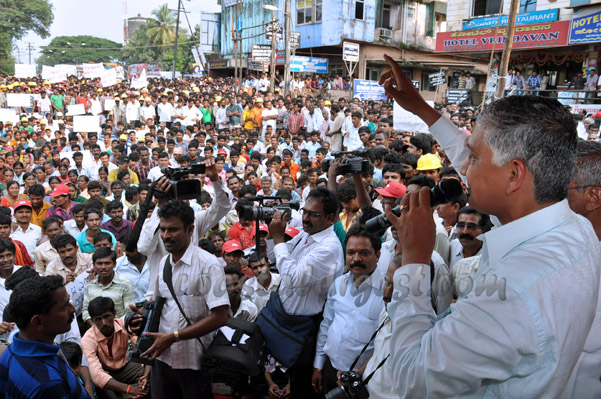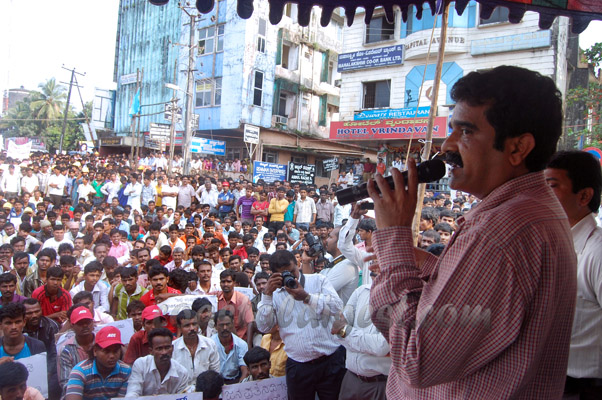
Mangalore, October 13: Dakshina Kannada district administration has issued a notification on Friday, on the safer zones for crusher units in nine villages, even as a massive protest was staged by the District Civil Contractors' Association in front of the Deputy Commissioner's office.
The protesters had demanded the government to find a solution to the problems faced by the people and the labourers due to the non supply of gravel from September 22.
According to the notification, Deputy Commissioner Dr N S Channappa Gowda said that those who wish to open a new crushing units in the safer zones have to submit a project report to the administration on or before October 20. The villages that have been identified are Aikala (45 acre), Nellikaru (36 acre), Kadandale (5 acre), Pucchamogaru (18 acre), Padukonaje (18 acre), Naringana (10 acre), Vitlamudnur (10 acre), Kabaka (6.5 acre) and Andinje (16 acre).
The contractors had taken out a protest rally from Town Hall to the DC's office.
Addressing the protesters, Association President M Purushothama Kottari said that following the closure of stone crushing units in the backdrop of the Supreme Court's order, the construction work of several government buildings, private houses, apartments and bridges have come to a halt. The contractors who have signed an agreement to complete the work within a time frame are in trouble.
Hence, the government should intervene and solve the problem, immediately, he demanded. Association of Civil Engineers President Vijaya Vishnu Mayya, respresentatives from construction industry Roy Castelino, Suresh Jain and others were present. The protesters submitted a memorandum to the Deputy Commissioner.
Why the crusher problem
The problem started after a writ petition was filed in the Supreme Court based on a video clipping that revealed the increase in pollution levels due to crusher units in Bellary. A satellite based survey was conducted by ISRO to identify the places where safer zones could be formed as per the 14 point guidelines issued by the SC.
As far as Dakshina Kannada district was concerned, no land was available in the district that could meet all the guidelines laid down by the Court.
Fearing contempt of court, the State Pollution Control Board directed for the closure of over 200 crusher units in undivided Dakshina Kannada district. With the closure, the crusher unit owners who are put into trouble have demanded the government to frame a separate policy for DK and Udupi districts and solve the problem.
The guidelines issued by the SC include, the crusher units must be located at a distance of minimum five kilometre away from the national highway, two km away from the state highway, two km away from the human habitation and reserve forests among others.
Those involved in the construction business argue that stone crushing units do not cause any health hazards. The dust from the crushers do not fly high like fly ash.
The dust from crusher units could be controlled by spraying water and by using the advanced crusher units. The government could cancel the licence of those units which violate the rules.
In Udupi
The Quarry Owners Association took out a rally from Karavali Junction to Manipal. Hundreds of vehicles took part in the rally.
The protesters complained that with the closure of crusher units, the cement, sanitary products, granite business has been affected.










Comments
Add new comment